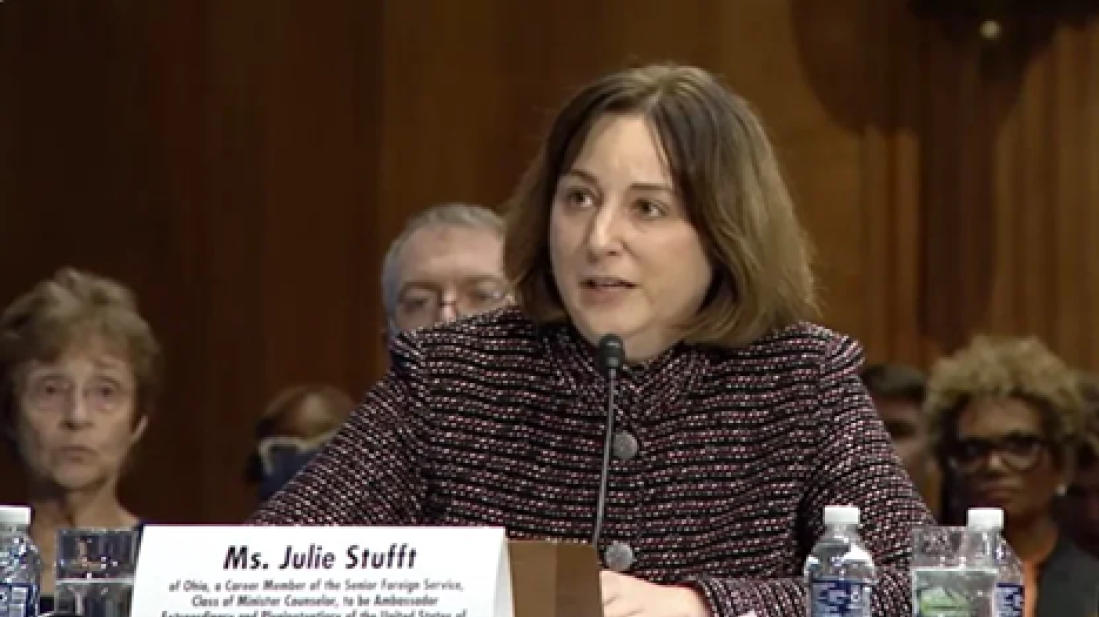UN Security Council to hold emergency meeting after Israel recognises Somaliland
The UN Security Council is set to hold an emergency session on Monday to discuss Israel’s recognition of Somaliland as an independent state, amid cr...

Kazakhstan has once again come into the geopolitical spotlight, this time with American interests front and center.
Julie Stafford, the U.S. Ambassador nominee to Kazakhstan, told the Senate during her confirmation hearings that nearly 50% of all critical minerals essential to the U.S. economy and national security are found in Kazakhstan. Specifically, these include rare earth metals vital for high-tech industries, defense manufacturing, and the shift toward green energy.
Stafford emphasized that the U.S. views Kazakhstan as a crucial partner in diversifying supply chains and reducing reliance on Russia and China. She pointed out that Russia applies pressure through its land border, while China is actively expanding its influence in Kazakhstan’s telecommunications and resource sectors.
The U.S. is ready to support the development of alternative export routes that bypass Russia. This includes reducing dependence on the Caspian Pipeline Consortium, which is controlled by Moscow and transports up to 80 % of Kazakhstan’s oil.
As of early 2025, Kazakhstan has identified 38 promising deposits with estimated reserves of rare earth metals totaling around 2.6 million tons. One of the largest discoveries is the “Zhana Kazakhstan” site in the Karaganda region, where preliminary estimates suggest up to 20 million tons of rare earth metals. This could make it the third largest deposit worldwide, after China and Brazil.
With growing global demand for rare earth metals used in electric vehicles, batteries, communication systems, and defense technologies, Kazakhstan’s strategic importance is rising. Experts forecast that the global rare earth metals market could grow two to threefold by 2030, and Kazakhstan is poised to play a key role in meeting that demand.
Today, Kazakhstan is carefully balancing relationships with major global powers. China stands as the largest investor with over 30 billion dollars in direct investments and broad access to resources. Russia remains a close partner with strong economic and historical ties, including integration efforts through the Eurasian Economic Union. At the same time, Kazakhstan is actively deepening cooperation with Europe, Türkiye, and the United States.
Astana aims to maintain a balanced foreign policy while developing infrastructure for the extraction and processing of rare earth metals. Several major projects are underway to modernize metallurgical plants, attracting both Western and Asian companies.
Experts say successful development in this sector could bring an additional 5 to 7 billion dollars annually to Kazakhstan’s economy and significantly boost its export potential. However, this strategy requires balancing the interests of multiple international players and managing domestic challenges such as environmental responsibility and technological security.
In this complex geopolitical and economic landscape, the U.S. sees Julie Stafford as a key diplomat who can strengthen dialogue and partnership with Kazakhstan. Washington hopes to expand its influence in a region that is becoming increasingly important for strategic resources and global geopolitics.
New York placed the state under emergency measures on Friday as a powerful winter storm brought the heaviest snowfall since 2022, disrupting travel across the north-east of the United States.
Russia launched missiles and drones at Kyiv and other parts of Ukraine overnight on Saturday, Ukrainian officials said, ahead of talks on Sunday between President Volodymyr Zelenskyy and U.S. President Donald Trump aimed at ending nearly four years of war.
The United States carried out a strike against Islamic State militants in northwest Nigeria at the request of Nigeria's government, President Donald Trump and the U.S. military said on Thursday.
Israel became the first country to formally recognise Somaliland as an independent state on Friday, drawing strong condemnation from Somalia and regional and international organisations.
President Volodymyr Zelenskyy has said he will meet U.S. President Donald Trump on Sunday to discuss territory and security guarantees, as diplomatic efforts intensify to end Russia’s war in Ukraine.
Italian authorities have arrested nine people on suspicion of financing Hamas through Italy based charities, prosecutors said on Saturday, in an operation coordinated by anti mafia and anti terrorism units.
The UN Security Council is set to hold an emergency session on Monday to discuss Israel’s recognition of Somaliland as an independent state, amid criticism from African, Middle Eastern, and other international actors.
Two people were killed and 26 others injured after a massive multi vehicle crash on a major expressway in Japan as the country began its end of year holiday travel period, police said on Saturday.
Russian President Vladimir Putin said on Saturday that Russian forces have captured the Ukrainian towns of Myrnohrad in Donetsk region and Huliaipole in Zaporizhzhia region, describing the developments as part of the ongoing "special military operation."
Canada will provide an additional $2.5 billion in economic aid to Ukraine, Prime Minister Mark Carney said on Saturday, as he met Ukrainian President Volodymyr Zelenskyy during a stopover in Halifax ahead of Zelenskyy’s visit to the United States.
You can download the AnewZ application from Play Store and the App Store.

What is your opinion on this topic?
Leave the first comment